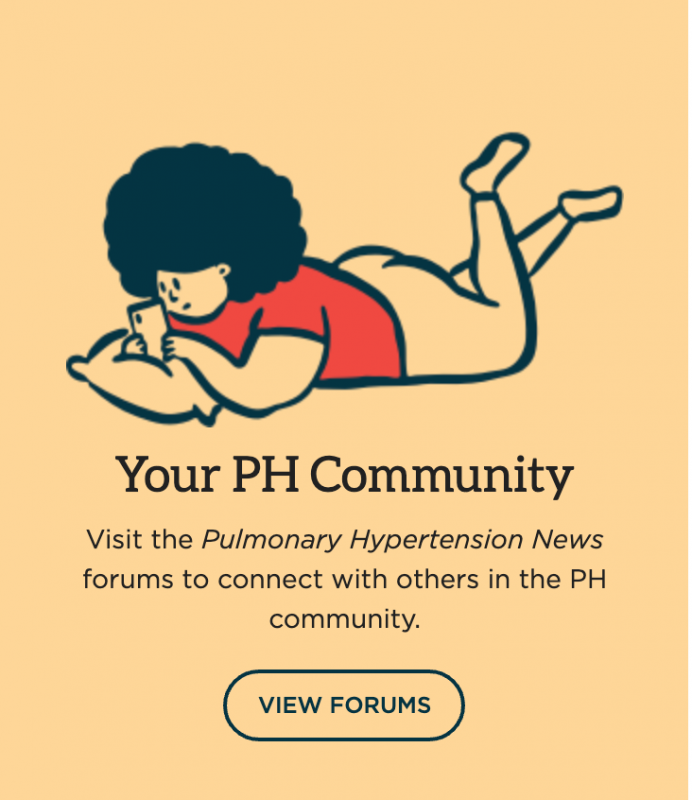The LARIAT Trial is a clinical research trial targeting the Pulmonary Arterial Hypertension (PAH) patient population.
[one_half]

Principal Investigator: Murali Chakinala, MD
Contact: Research Coordinator

- Washington University School of Medicine
- St. Louis, Missouri, United States, 63110
Principal Investigator: Murali Chakinala, MD
Contact: Research Coordinator
[/one_half]
[one_half_last]
Please complete the information request form and you will be contacted once the investigational site is open to recruiting.
If you prefer not to submit a contact form, please CLICK HERE to send an email. Please include your name, city and state in the message and your information will be sent to the nearest investigational site.
By submitting your contact information, you agree to have your information used for the purpose of obtaining information on clinical trials. Your contact information will only be provided by Bionews Services, a third party vendor, to study doctors and their teams who are enrolling patients into clinical trials. Your contact information will not be sold, shared with any other third parties, or used for any other purpose. After a period of 3 years, your contact information will be destroyed, unless you have provided written permission otherwise.
[/one_half_last]
[one_half]
[/one_half]
[one_half_last]
[/one_half_last]
The molecular and pharmacological effects of bardoxolone methyl are broad through its induction of Nrf2 and suppression of NF-κB. Bardoxolone methyl may therefore address multiple facets of the pathophysiology of PAH because it suppresses activation of proinflammatory mediators, enhances endothelial NO bioavailability, improves metabolic dysfunction, suppresses vascular proliferation, and prevents maladaptive remodeling. Furthermore, while existing therapies primarily target only smooth muscle cells, bardoxolone methyl targets multiple cell types relevant to PAH, including endothelial cells, smooth muscle cells, and macrophages.
This is a two-part study sponsored by Reata Pharmaceuticals of Irving, TX.
Part 1: Part 1 of the study will include both dose-escalation and expansion cohorts.
Part 2 (extension period): All patients from Part 1 who complete the 16-week treatment period as planned will be eligible to continue directly into the extension period to evaluate the intermediate and long-term safety and efficacy of bardoxolone methyl.
Criteria
Inclusion Criteria:
- Adult male and female patients ≥ 18 to ≤ 75 years of age upon study consent;
- Symptomatic pulmonary arterial hypertension WHO/NYHA FC class II and III;
- One of the following subtypes of WHO Group 1 PAH:
- Idiopathic or heritable PAH;
- PAH associated with connective tissue disease;
- PAH associated with simple, congenital systemic-to-pulmonary shunts at least 1 year following shunt repair;
- PAH associated with anorexigens;
- PAH associated with human immunodeficiency virus (HIV);
- Had a diagnostic right heart catheterization performed and documented within 12 months prior to Screening that confirmed a diagnosis of PAH
- Has been receiving an oral, disease-specific PAH therapy consisting of an endothelin receptor antagonist (ERA) and/or a phosphodiesterase type-5 inhibitor (PDE5i). PAH therapy must be at a stable dose for at least 90 days prior to Day 1;
- Has adequate kidney function defined as an estimated glomerular filtration rate (eGFR) ≥ 60 mL/min/1.73 m2 using the Modification of Diet in Renal Disease (MDRD) 4-variable formula;
Exclusion Criteria:
- Participation in other interventional clinical studies within 30 days prior to Day 1;
- Participation in an intensive exercise training program for pulmonary rehabilitation within 90 days prior to Screening;
- Receiving chronic treatment with a prostacyclin/prostacyclin analogue or riociguat within 60 days prior to Day 1. Use of prostacyclin for acute vasodilator testing during right heart catheterization is allowed;
- Requirement for receipt of intravenous inotropes within 30 days prior to Day 1;
- Has uncontrolled systemic hypertension as evidenced by sitting systolic blood pressure (BP) > 160 mm Hg or sitting diastolic blood pressure > 100 mm Hg during Screening after a period of rest;
- Has systolic BP < 90 mm Hg during Screening after a period of rest;
- Has a history of left-sided heart disease and/or clinically significant cardiac disease,including but not limited to any of the following:
- Aortic or mitral valve disease (stenosis or regurgitation) defined as greater than mild aortic insufficiency;
- Pericardial constriction;
- Restrictive or congestive cardiomyopathy;
- Left ventricular ejection fraction < 40% at the Screen A echocardiogram (ECHO);
- Evidence of left ventricular diastolic dysfunction;
- Left ventricular shortening fraction < 22% at the Screen A ECHO;
- Symptomatic coronary disease;
- Acutely decompensated heart failure within 30 days prior to Day 1, as per Investigator assessment;
- History of atrial septostomy within 180 days prior to Day 1;
- History of obstructive sleep apnea that is untreated;
- For patients with HIV-associated PAH, any of the following:
- Concomitant active opportunistic infections within 180 days prior to Screening;
- Detectable viral load within 90 days prior to Screening;
- Cluster designation (CD+) T-cell count < 200 mm3 within 90 days prior to Screening;
- Changes in antiretroviral regimen within 90 days prior to Screening;
- Using inhaled pentamidine;
- Has a history of portal hypertension or chronic liver disease, including hepatitis B and/or hepatitis C (with evidence of recent infection and/or active virus replication) defined as mild to severe hepatic impairment (Child-Pugh Class A-C);
- Serum aminotransferase (ALT or AST) levels > the upper limit of normal (ULN) at Screening
This information was originally posted on www.clinicaltrials.gov.




